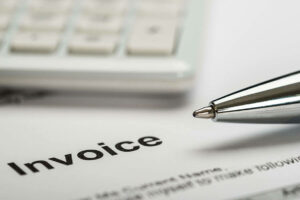
Net profit refers to the total revenue generated by a company minus all expenses, taxes, and other costs incurred during a given accounting period. Revenue, net profit, and retained earnings are terms frequently used on a company’s balance sheet, but it’s important to understand their differences. Sometimes when a company wants to reward its shareholders with a dividend without giving away any cash, it issues what’s called a stock dividend. This is just a dividend payment made in shares of a company, rather than cash.
Stock Dividend Example
Revenue refers to sales and any transaction that results in cash inflows. For instance, if your business has $20,000 left over after covering all its financial responsibilities—including operating expenses like employee salaries—you would report that money as retained earnings. The other is an action on the part of the board of directors to increase paid-in capital by reducing RE. The act of appropriation does not increase the cash available for the acquisition and is, therefore, unnecessary. It may be done, however, if management believes that it will help the stockholders accept the non-payment of dividends.
What’s the point of carrying forward positive results?
The retained earnings amount can also be used for share repurchases which can help improve the value of your company stock. There are numerous factors to consider to accurately interpret a company’s historical retained earnings. ☝️ It is compulsory to allocate 5% of profits each year to the legal reserve, until it reaches 10% of share capital. Below is the balance sheet for Bank of America Corporation (BAC) for the fiscal year ending in 2020. Shareholder equity is located towards the bottom of the balance sheet.
Find your net income (or loss) for the current period

It is a key indicator of a company’s ability to generate sales and it’s reported before deducting any expenses. Retained earnings are reported in the shareholders’ equity section of a balance sheet. If an investor is looking at December’s financial reporting, they’re only seeing December’s net income. But retained earnings provides a longer view of how your business has earned, saved, and invested since day one. Calculating retained earnings after a stock dividend involves a few extra steps to figure out the actual amount of dividends you’ll be distributing.

GAAP greatly restricted this use of the prior period adjustment, but abuses have apparently continued because items affecting stockholders’ equity are sometimes still not reported on the income statement. When a company consistently retains part of its earnings and demonstrates a history of profitability, it’s a good indicator of financial health and growth potential. This can make a business more appealing to investors who are seeking long-term value and a return on their investment.
- Similarly, any of these obligations that companies must repay within 12 months are current liabilities.
- The figure is calculated at the end of each accounting period (monthly/quarterly/annually).
- That’s your beginning retained earnings, profits or losses for the period, and your dividends paid.
- For traded securities, an ex-dividend date precedes the date of record by five days to permit the stockholder list to be updated and serves effectively as the date of record.
What is your current financial priority?
When total assets are greater than total liabilities, stockholders have a positive equity (positive book value). Conversely, when total liabilities are greater than total assets, stockholders have a negative stockholders’ equity (negative book value) — also sometimes called stockholders’ deficit. This means that the value of the assets of the company must rise above its liabilities before the stockholders hold positive equity value in the company. At is retained earnings a liabilities the end of that period, the net income (or net loss) at that point is transferred from the Profit and Loss Account to the retained earnings account.

If a company undergoes liquidation, it will repay the retained earnings balance to shareholders. However, other factors impact how much of this balance shareholders will receive. On top of that, retained earnings are ultimately the right of a company’s shareholders. For example, if a company declares a stock dividend of 10%, meaning the company would have to issue 0.10 shares for each share held by the existing stockholders. If you as a shareholder of the company owned 200 shares, you would then own an 20 additional shares, or a total of 220 (200 + (0.10 x 200)) shares once the company declares the stock dividend. Your company’s equity investors, who are long term investors, will seek periodic payments in the form of dividends as a return on the money invested by them in your company.

Your current retained earnings are simply whatever you calculated during your last financial period. The same goes for the net profit/net loss, calculated by the month, quarter, year, or whatever your accounting period is. Whatever you paid shareholders in dividends for the period will reduce the amount shown in the statement of retained earnings. Your retained earnings account provides an ongoing count of how much money your business has been able to hold onto since it launched. As you reinvest your business or pay shareholder dividends, your gross vs net retained earnings dip down. They can fall into a negative balance with accumulated deficits if times have been particularly tough for your company or if it’s in its startup years when you are trying to build up the business.
